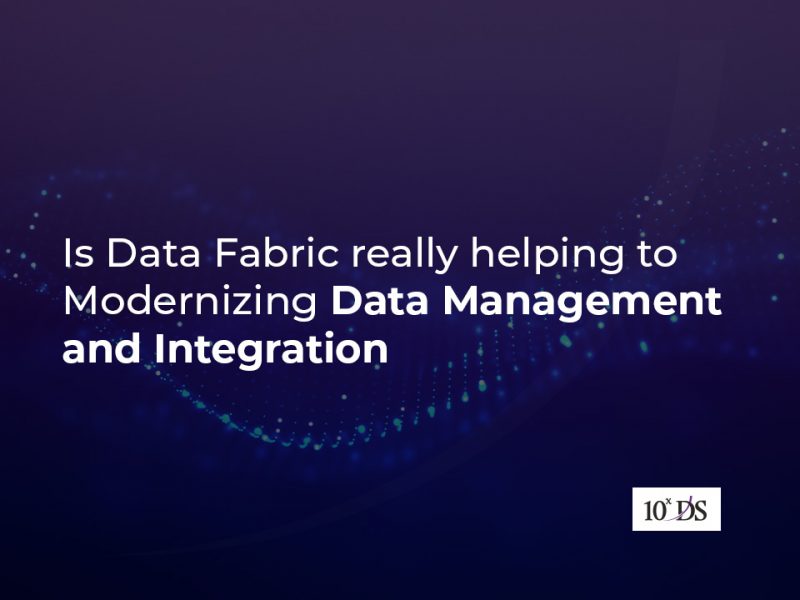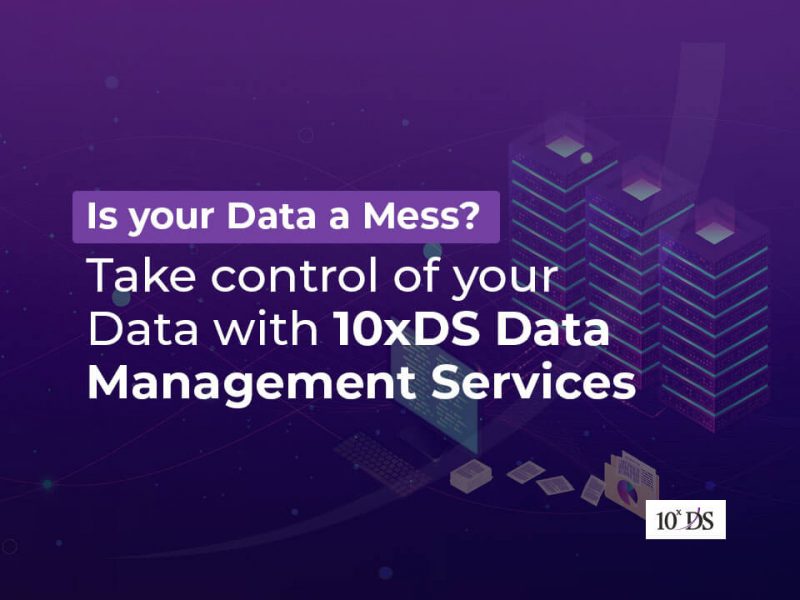
Data is gold – Are you really unleashing its power?
“Over 2.5 quintillion bytes of data are created every single day, and it’s only going to grow from there. By 2020, it’s estimated that 1.7MB of data will be created every second for every person on earth.”
This is according to the 6th edition of the Data Never Sleeps report. Every swipe, click, like, purchase, search, pictures, posts, and stream contribute to this ever-increasing trend. The ability to act on this data is something that every company and every industry look up to. The expectation is even more now to act on data real-time. But the major challenge in achieving this is to bring together people, data, and systems and also the overwhelming obstacles at the beginning of the analytics life cycle.
Let us discuss the major challenges and how to overcome them:

Image: 10xDS
1. Trapped data and piecemeal approach to data management
The major chunk of data from organisations is stored in infrastructure silos as organizations adopt both on-premises and cloud-based data storage platforms. Some enterprises use more than one cloud services. Managing this data itself is complex, let alone deriving value from the data. Getting these data seamlessly for analysis is the first major stumbling block to overcome. The piecemeal approach to backing up, storing, analysing, and attempting to manage data taken by organizations over the years have contributed to the data being fragmented in various sources.
Overcoming this data fragmentation challenge would need an organization-wide assessment and devising a long-term plan to get the data in very few places to be able to unlock the power of data. This decision must come from the boardroom and not the IT department alone. The host of tools and processes used to manage data add to inefficiencies and increased cost. They need to be replaced by modern software-defined infrastructure to bring together the disparate elements together and to make data manageable.
2. Reactive approach to data management
When it comes to dealing with storage capacity problems, IT department might just decide to store them in backups, archives, file shares and object stores. The value of this data is easily overlooked and is not readily available for any further analysis. Data gets fragmented and it attracts harsh fines and brand damage from non-compliance to data protection laws. If an enterprise is unaware of where the data is stored, they cannot be confident of its compliance with government regulations. Extra resources are added to overcome a problem in the short term, like taking up a small enhancement in an already existing legacy software. However, the ideal way is to arrive at a long-term, company-wide data management strategy so that the enterprise can be seen as good stewards of data.
3. Lack of robust policies and process in place
IT departments, many times struggle between the demands from business teams and the limitations that they have in hand. They also lack core, integrated, data management capabilities and human personnel. This results in Business not getting what they really want out of the data that they generate. Enterprises need to establish data driven strategy framework. It needs to clearly lay out data platforms, data architecture, governance, metadata management and analytics strategy in it. With this, the enterprises will be able to achieve an agile data chain with cloud-based and scalable platforms.
Conclusion
A Forrester Consulting Thought Leadership published in November 2018 suggests that to drive these initiatives, many companies are hiring talent, upskilling people, and driving collaboration and using integrated platforms that span the full data, analytics, and data science stack. The only way to unlock value of data is by investing in People, Processes, Integrated Data and Analytics Platforms for long term.
Talk to our Experts to know more and to join the data journey.


